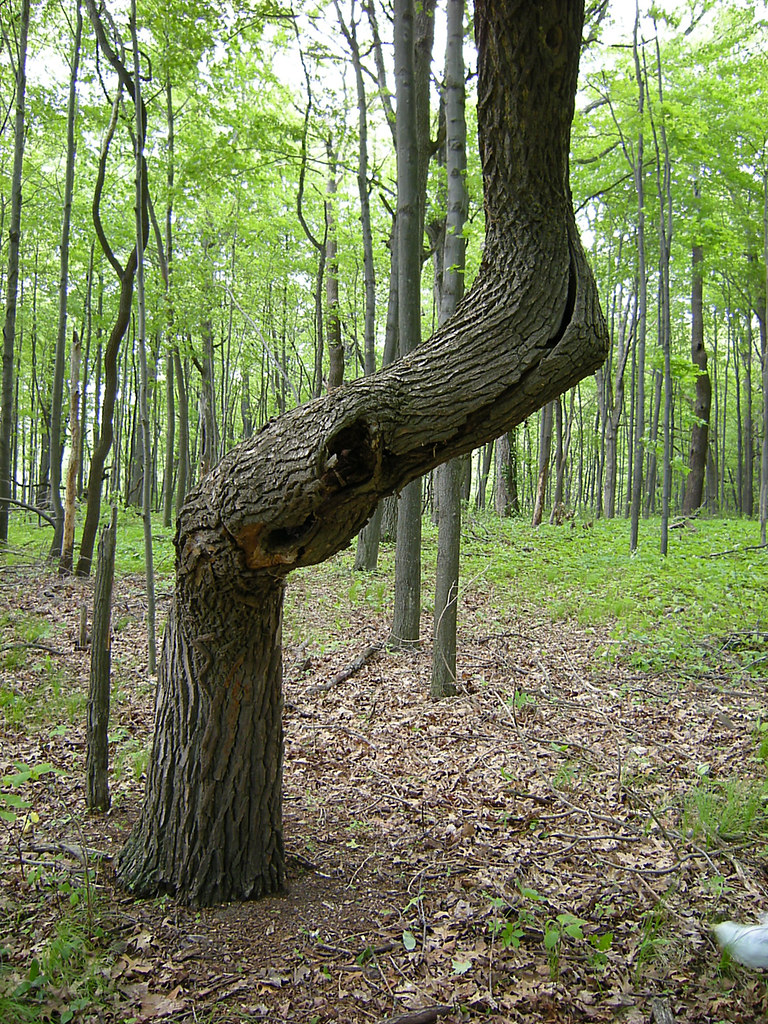Indians Used To Use Bent Trees in the Woods To Keep Track of Important Things
When most people stumble on an oddly shaped tree that appears to be bent, they might presume it just grew that way.
However, this presumption can sometimes be wrong.
According to American Forests, a 100+ year-old non-profit dedicated to the conservation of forests, some bent trees “are actually landmarks that helped guide indigenous people on their way.”
“Native Americans would bend young trees to create permanent trail markers, designating safe paths through rough country and pointing travelers toward water, food or other important landmarks,” American Forests’ former managing editor, Katrina Marland explained.
“Over the years, the trees have grown, keeping their original shape, but with their purpose all but forgotten as modern life sprang up around them.
“Today, we may not need these ‘trail trees’ to navigate, but their place in history makes them invaluable.”

To be clear, not every bent tree is a trail tree, as noted by The Illinois Steward, a now-defunct University of Illinois magazine:
“Our forests of today contain numerous trees growing at odd angles, but very few of them could have been authentic trail-marker trees for Native Americans.”
And those that do exist tend to be at least between 200 and 300 years old.
Trees younger than that were clearly produced by nature itself, since Native Americans have been absent from most sections of the country for centuries now.
In fact, of the 450 trail trees brought to the attention of Steve Houser, an arborist with the Texas Historic Tree Coalition, only a handful turned out to be the real deal.
And as noted by Atlas Obscura magazine, the number of remaining trees is quickly dwindling.
Not only are they not legally protected, but their ages are creeping up on them fast.
“One of the trees that the Texas coalition had officially recognized in 1996 was damaged the very next year,” the magazine noted.
“The tree had originally touched the ground and grown upwards, but over Memorial Day in 1997, a storm broke its vertical trunk. All that was left was an unusual beam of tree, arced horizontally to the ground.”
This is why if and when you stumble on a bent tree, you should take a look around and see if it points to something — because it may be pointing to history.
Truth and Accuracy
We are committed to truth and accuracy in all of our journalism. Read our editorial standards.
Advertise with The Western Journal and reach millions of highly engaged readers, while supporting our work. Advertise Today.











